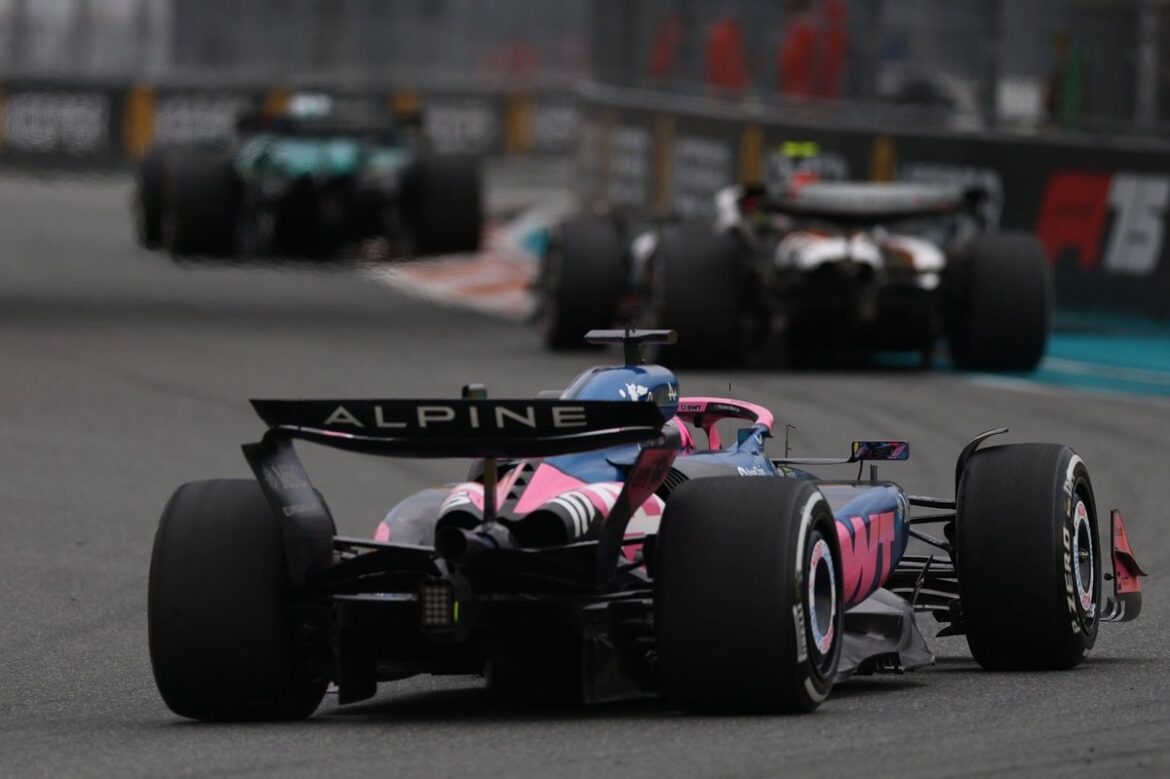When Formula 1 transitioned to turbocharged hybrid power units at the start of the 2014 season, Mercedes had already invested significant resources in its development for an extended period. This early investment led to nearly five years of unchallenged dominance, leaving competitors struggling to catch up. In fact, Renault’s efforts to compete can be seen as largely unsuccessful. The looming shift to new power units featuring increased electrical deployment is causing concern among team principals, reminiscent of the challenges faced a decade ago.
This sense of unease regarding the competitive landscape has been palpable within the F1 community for months. The frenzy over a potential return of V10 engines at the season’s beginning and Alpine’s pivotal decision to switch from its Renault power units to those supplied by Mercedes are two notable examples of this anxiety. Recently, Audi has also seen significant changes within its management structure, particularly with the departure of engine chief Adam Baker. Audi’s F1 engine program operates as a separate entity under the Audi Sport umbrella, and Baker had been overseeing engine development since mid-2022.
This recent shake-up comes amid reports suggesting that Audi’s engine program is facing challenges. CEO Gernot Dollner was spotted at a crucial meeting with F1 stakeholders right before the Bahrain Grand Prix, signaling the seriousness of the situation. Dollner was one of the voices advocating for more provisions to assist underperforming teams in the upcoming 2026 regulations. While many stakeholders agreed on this need, Mercedes, which currently holds a strong competitive position, was less supportive.
The primary challenge lies in how to integrate catch-up mechanisms within F1’s existing financial constraints. Nikolas Tombazis, director of single-seater racing at the FIA, acknowledged past imbalances, stating that overcoming these issues typically required additional spending from those needing to recover, alongside considerable effort and perseverance. However, with the introduction of a cost cap, this becomes more complex.
The regulations, initially set in 2022, included provisions to assist underperformers. Currently, discussions are ongoing with power unit manufacturers to determine the specifics of these provisions. Tombazis clarified that the intent is to create opportunities for underperforming teams to enhance their development efforts, rather than establishing any artificial means to boost engine performance.
This initiative aims to ensure that teams do not become permanently disadvantaged under the cost cap, as it would inhibit their ability to catch up with more competitive teams. Tombazis emphasized the importance of allowing new power unit manufacturers to compete effectively, as they often lack the extensive expertise accumulated over years by established teams.
A notable example of the difficulties faced by new entrants is Honda. Despite a rich history in motorsport, Honda struggled significantly during its initial attempts to develop a competitive hybrid power unit. The journey to align its performance with that of Mercedes and Ferrari took several years and required substantial financial and engineering investments, even leading to budget cuts in other racing programs.
After reaching a point of frustration, Honda initially announced its withdrawal from F1 but later reversed that decision when its partnership with Red Bull began to yield championship victories. The alignment of the 2026 regulations with Honda’s road-car initiatives ultimately influenced this decision.
Tombazis remarked on Honda’s resilience and engineering prowess, which enabled the company to eventually catch up. He noted that if Honda had not been able to invest more during its challenging period, it might not have achieved the competitive level it reached. The FIA wants to ensure that new power unit manufacturers can remain in the sport long enough to become competitive.
During a recent F1 Commission meeting, stakeholders reached a consensus on the need for a catch-up mechanism, although the details are still under discussion. This situation is further complicated by a parallel dialogue regarding adjusting electrical deployment during races to mitigate concerns about cars running out of energy on long straights.
Proposals for the catch-up mechanism have been handed over to a dedicated working group focused on power units, which will develop more detailed recommendations. The likely outcome is a system that allows for varying levels of dyno testing and budget cap concessions based on performance discrepancies, similar to the current aerodynamic testing regulations that impose stricter limitations on teams at the top of the constructors’ championship.
The challenge ahead lies in finalizing the specifics of these mechanisms while preventing potential loopholes. While the 2026 engine package aims to simplify regulations and cut costs, the competitive nature of F1 often leads to teams seeking to invest more than intended.
In the current generation of power units, components like pistons are produced from high-grade steel with intricate geometries, necessitating advanced knowledge and experience. Established manufacturers have refined their expertise over the years, leading to significant cost implications; for instance, a single piston can cost around $10,000 to produce.
When new manufacturers expressed interest in joining F1 under the 2026 regulations, some, including Porsche, initially advocated for aluminum components instead. However, after analyzing the financial implications and potential competitive advantages, they reconsidered their stance.
As the FIA, Tombazis highlighted the organization’s role in mediating discussions around regulations, aiming to maintain cost control while fostering a level playing field. The balance between cost reduction and technological freedom often presents challenges, as teams and manufacturers strive to protect their investments and interests.
Moving forward, the F1 community must navigate these complexities to create an environment where all teams, regardless of their historical performance or resources, can compete on equal footing. The development of a fair catch-up mechanism is essential to ensure the long-term health of the sport and its competitive landscape.
